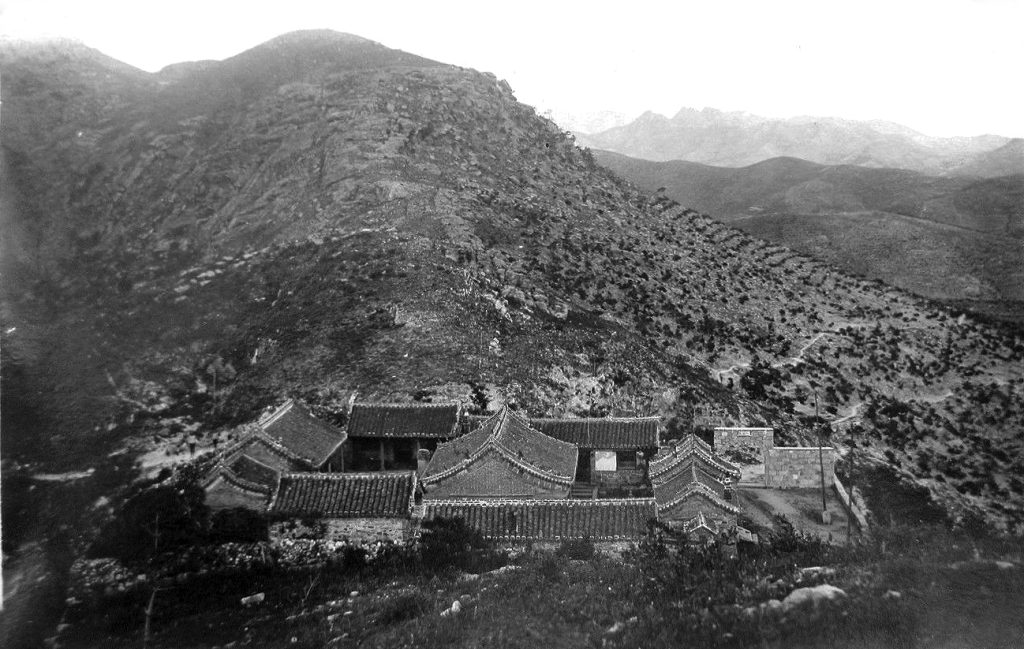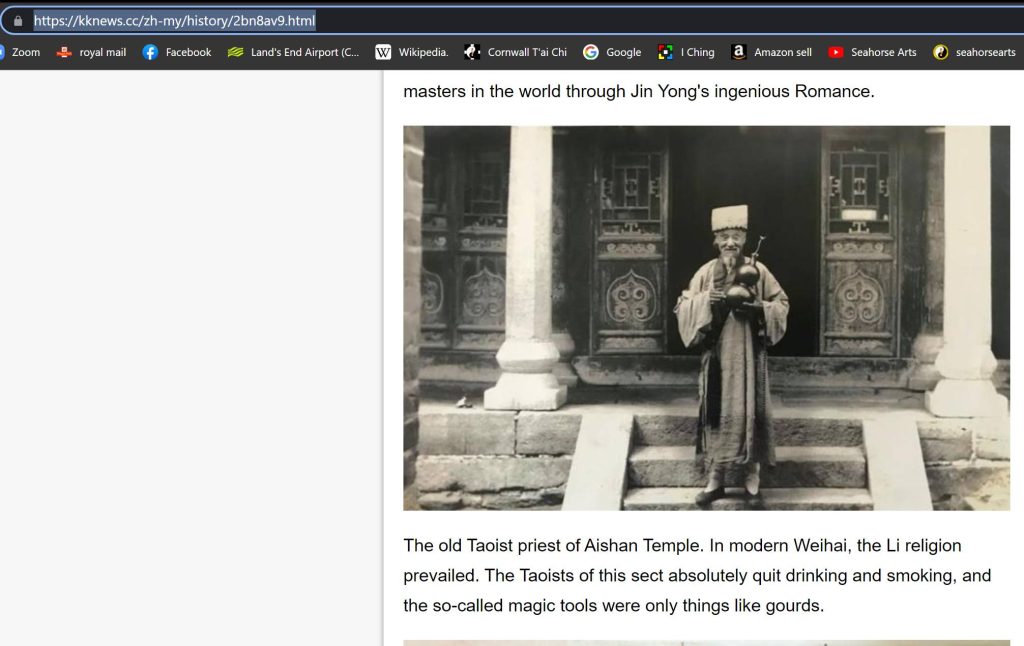The history of the Lee style
Lee style Tai Chi was popularized for Westerners by Chee Soo, a cockney East ender, who learned the Taoist Arts from an elderly Chinese gentleman called Chan Kam Lee who was working in Hatton Garden and had a class in Red Lion Square in Holborn.
Chan Lee was from Weihai which was a small town on the peninsula of Shandong in Northern China. Weihai actually means Sea Fort and Weihaiwei was originally a military garrison and walled city which was used to defend Northern China against Japanese pirates. Shandong was also a famous area for Taoism because it contains the most sacred of the holy mountains of China known as Mount Tai. Shandong is also home to the Kong family mansions and the burial site of Confucius a famous Taoist philosopher from the warring states period. Shandong is also a famous area for martial arts and contains the legendary Water Margin the home of the heroes of Liang Shan Po.
According to Chee Soo the Lee family style originated from Beijing and traveled to Shandong in the Zhou dynasty around 1000BC when Ho Hsieh Lee settled in Weihaiwei. Although there are no written records that have survived from this time the Lee family graveyard and Ai-shan-ch’ien village is mentioned in “Lion and Dragon in Northern China” (page 54) by Reginald Johnson as being located close to the Aishan temple in Aishan pass to the South West of Weihaiwei town.

After the Boxer uprising in Shandong in 1898 Weihaiwei became a British territory similar to Hong Kong and was used as a coaling station and respite stop for British warships of the China station such as HMS Hermes the first ever aircraft carrier. Reginald Johnson became the governor of Weihaiwei but originally was famous for being the tutor of Puyi the Last Emperor of China, he was a sinophile and could speak fluent Chinese and was very familiar with Chinese culture and wrote this book in 1910 when he was working in Weihai for the Foreign Office.
According to some sources, the Lijiao was the religion prevalent in Shandong and the Aishan temple since the founder taught Taoism in the region from the Kangxi period (1701). Aishan temple and the surrounding villages were dedicated to Bijia who was a goddess of Mount Tai and was famous for the New Year’s festival that took place every year and was sponsored by the eight surrounding villages and was attended by 10,000 people ad was famous throughout China. The highlights of this festival included all kinds of religious and cultural activities including Yange dancing, a kind of fan dance, stilt walking and dragon boat races, and prolific feats of juggling, and a special theatre was built down the slope from the temple to put on historic plays and enactments which formed an important part of local society and culture and were used to raise funds for the upkeep of the temple. One of the residents of the temple was known as Taoist Chan. Could this be Lee Chan Kam the famous Taoist master? or perhaps a relative, because almost everyone in the surrounding villages was from the Li family.

However in 1948 the temple was torn down to the foundations as a result of the civil war, and then later during the Cultural revolution in 1966, the Lee family graveyard was also destroyed at about the same time the Confucius graveyard was destroyed at the Kong family mansion, so very little remains from these times to give us clues as to how life was conducted and what were the stories and activities for the people who lived there. What we do know is that it is likely the remnants of the Lee family may have escaped to Taipei in 1948 when the temple was destroyed and set up the Lijiao or Lee-style temple again but once again the temple was destroyed in 1975 this time by fire and all the relics were destroyed with it and nothing now remains. Lijiao still continues to be a popular religion in Taiwan to the present day and continues the doctrines laid down by the founder Yang Lairu.
Chan Lee was living in Weihaiwei in the 1930s and was also trading gemstones in Japan, Hong Kong, Singapore and London which was the centre of the world diamond trade at the time. In 1930 he left Shandong and moved to London and it was there that he met Chee Soo for the first time in 1934, and because Chee Soo was an orphan he adopted him and started teaching him the Taoist Arts like Tai Chi and Ancient Chinese Medicine healing methods. Chee Soo went on to teach the Lee style in Britain and all over the world, and during the cultural revolution when Tai Chi was banned in China the Lee style was the most popular style in the world with many classes throughout Europe and the Commonwealth countries.
You can read more about the Lee style and it’s origins and development in Chee Soo’s own words, you can find all his books at the Seahorse Books site.